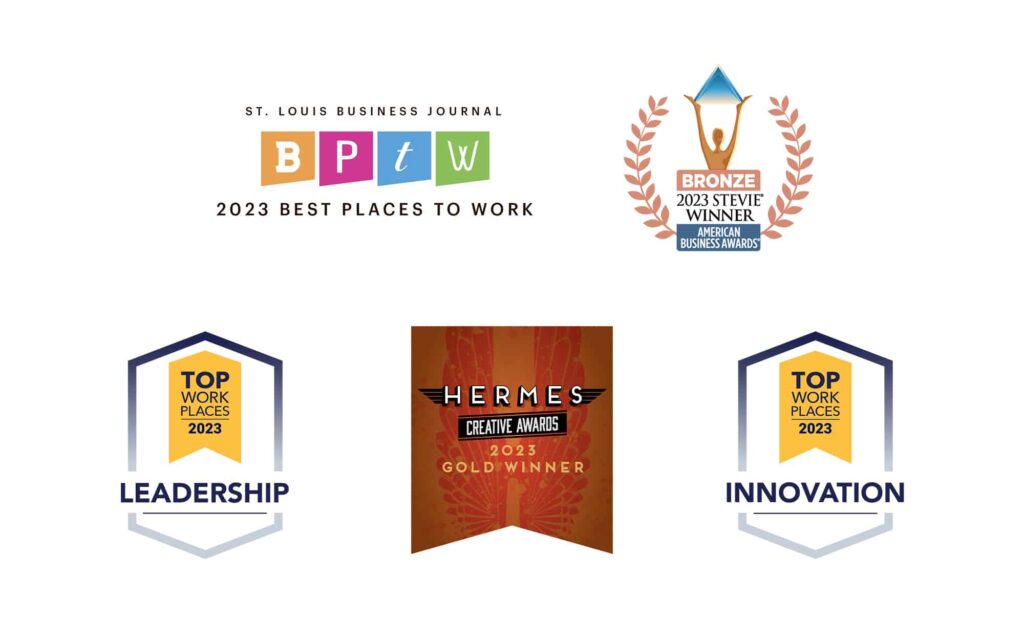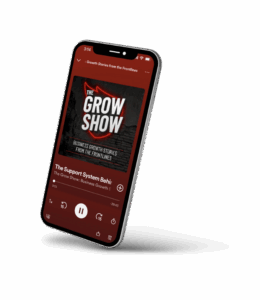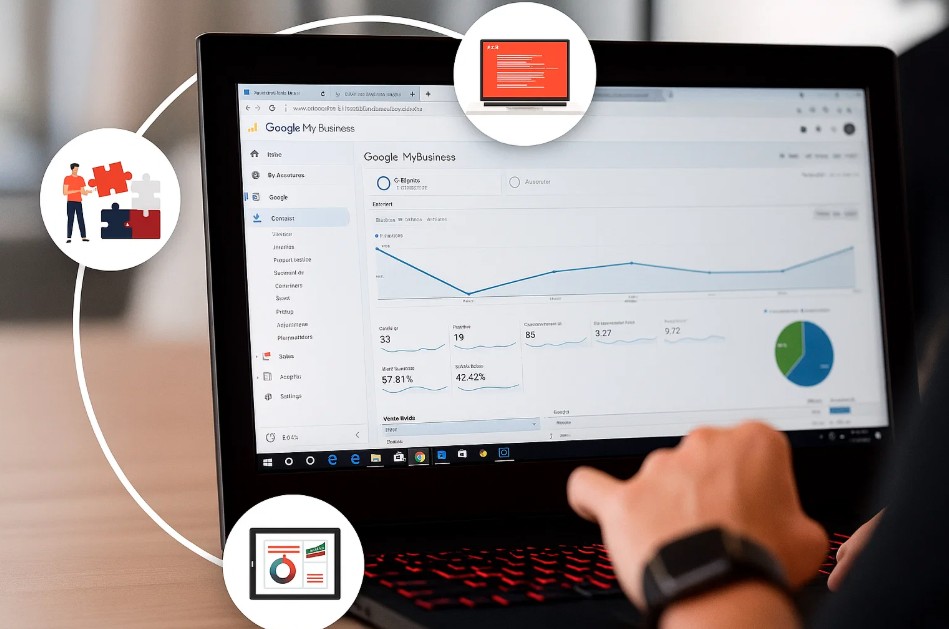Whether you’re a well-seasoned marketer or just dipping your toes, understanding these trends will give your business the competitive edge it needs to get ahead and stay ahead of the competition. Let’s dive into the ten content marketing trends that will define 2025!
Contents
- 1 Trend #1: Incorporating AI That Supports, Not Leads, Content Creation
- 2 Trend #2: Bring Your Brand to Life With Interactive Content
- 3 Trend #3: Prioritizing a Human Touch in a Digital World
- 4 Trend #4: Short-Form Video: Quick, Impactful, and Essential
- 5 Trend #5: Creating Hyper-Personalized Content
- 6 Trend #6: The Shift from Needs-Driven to Aspirations-Driven Content
- 7 Trend #7. The Rise of Voice Search Optimization: Adapt or Fall Behind
- 8 Trend #8: Embrace the Power of Audio Content
- 9 Trend #9: A Push Towards Increased VR and AR Adoption
- 10 Trend #10: Content Audits and Content Refreshes Are Going to Be Key
- 11 Key Takeaways
Trend #1: Incorporating AI That Supports, Not Leads, Content Creation
In a few short years we’ve seen AI transform from a new idea rejected by old-fashioned industry veterans into a mainstay tool for the modern marketer. However, 2025 is all about AI’s intentional and strategic use to support content creation—not dominate it. Rather than relying on AI to produce entire blogs or marketing copy, savvy marketers are now using it as a foundation, leveraging its capabilities for ideation, research, or quick drafts, and then spicing it up with a human touch for authenticity and connection.
For example, AI can analyze data and provide insights on what topics are trending within your industry or assist in optimizing content for SEO, such as suggesting keywords. But when it comes to actual storytelling and brand voice? That’s where human marketers (like yourself) step in, making sure content feels genuine and resonates with target audiences. In short, AI is a powerful sidekick, but it’s the marketers who drive the content strategy.
Keep Reading: AI in B2B Marketing: What You Need to Know
Trend #2: Bring Your Brand to Life With Interactive Content
Engaging your audience is no longer a one-way street. Interactive content allows customers to actively participate in the brand experience, creating a more memorable, impactful connection. In 2025, we’ll see brands embrace interactive content: from quizzes and polls on social media to interactive infographics, calculators, and even 3D product demos on websites.
This type of content doesn’t just engage—it gathers valuable insights into user preferences and behavior. Imagine a financial services brand offering an interactive savings calculator on its website, where users input their spending habits and receive personalized recommendations. This helps users, provides the brand with valuable data, and immediately starts building a relationship between you and the customer.
Whether through immersive landing pages or gamified experiences, interactive content keeps users invested in your brand and encourages longer and more meaningful engagement.
Trend #3: Prioritizing a Human Touch in a Digital World
With digital interactions becoming the norm, brands need to find ways to make them feel more human. In 2025, humanizing the content experience will be critical for brands that want to stand out and foster real connections with their audience. This shift means creating content that speaks directly to your audience’s emotions, challenges, and values—basically, you gotta let them know that you “get it.”
Instead of generic content that could apply to anyone, brands in 2025 will need to craft messaging that is personalized and empathy-driven. This could mean sharing customer stories, focusing on authentic brand values, or providing helpful content that goes beyond a sales pitch. As audiences increasingly look for brands that understand their unique needs, prioritizing a human touch becomes an essential differentiator.
Keep Reading: Personalization, Lead Gen, and You
Trend #4: Short-Form Video: Quick, Impactful, and Essential
The appeal of short-form video has skyrocketed, and it’s not slowing down in 2025. Brain-melting sensations TikTok, Instagram Reels, and YouTube Shorts are fueling this trend, making it easier than ever for brands to share bite-sized, engaging content that gets straight to the point. As attention spans continue to dwindle, brands must communicate their messages quickly and impactfully.
Short-form videos are perfect for storytelling, product showcases, tutorials, or even quick customer testimonials. The key is to provide value within the first few seconds, whether it’s through compelling visuals, intriguing hooks, or helpful insights.
The best part? These versatile videos allow you to share them across multiple platforms to maximize reach and visibility.
Keep Reading: The Power of Video Marketing
Trend #5: Creating Hyper-Personalized Content
Today’s consumers expect a high degree of personalization in every interaction. In 2025, this expectation will be pushed further with hyper-personalized content that goes beyond simply adding a customer’s name to an email. Instead, it involves utilizing data to tailor content to the exact needs, behaviors, and preferences of individual users, often in real-time.
For instance, a B2B software company might use website analytics to identify where a potential client is in the buyer’s journey and then deliver specific content that speaks to their current stage.
Users who are just beginning their research might be shown an educational blog post. If they’re closer to making a decision, they may receive a case study or a product demo invite. Hyper-personalization doesn’t just help content feel more relevant; it significantly increases engagement and conversion rates by providing users with precisely what they need when they need it.
Ready to take your inbound marketing to the next level? Marketing is evolving, and Abstrakt Marketing Group is here to help your business keep up. From SEO strategies to content marketing solutions, our team has the expertise to elevate your brand’s digital presence.
Trend #6: The Shift from Needs-Driven to Aspirations-Driven Content
We’re witnessing a significant shift in how brands approach content marketing—more and more businesses are aiming to appeal to their customers’ aspirations, rather than just their immediate needs. While traditional marketing often emphasizes solving problems, aspirations-driven content speaks to a customer’s goals, dreams, and long-term vision, positioning a brand as a partner in helping them achieve those ambitions.
For example, an eco-friendly home goods company might focus on the aspirational lifestyle of sustainable living, sharing content that showcases beautiful, zero-waste kitchens or tips on reducing your carbon footprint. By focusing on the lifestyle and values customers aspire to, brands can tap into a deeper emotional connection and foster stronger, more loyal relationships.
In 2025, this approach will likely become the new standard, as customers increasingly look for brands that align with their personal values and vision of a better future.
Trend #7. The Rise of Voice Search Optimization: Adapt or Fall Behind
Voice search is becoming more popular every day, with users opting for voice-enabled devices like Alexa, Google Assistant, and Siri to answer questions and make decisions on the go. To align with this trend, content marketers must ensure their content is optimized for voice search, which differs significantly from traditional typed search.
Voice searches tend to be conversational and question-based. Instead of using short phrases or keywords, time-conscious voice searchers are more likely to ask questions like, “What Is Cross Channel Marketing?” or “What’s the Difference Between Omnichannel and Cross Channel Marketing?” This means that content should be adapted to reflect natural language queries. Consider incorporating FAQs, Q&A sections, and content that directly answers specific questions.
In 2025, as voice search becomes more commonplace, the businesses that align their content to this search style will be the ones capturing more organic traffic. By optimizing for voice search, you cater to users’ needs and position your brand as an accessible resource in an increasingly voice-driven digital world.
Trend #8: Embrace the Power of Audio Content
With the ever-growing popularity of podcasts, now is the time to invest in audio content. A great business podcast allows organizations to share their stories, discuss industry insights, and engage their audience in a format that can be consumed on the go. At Abstrakt, we’ve seen the power of this medium through our own Grow Show podcast, where our leadership shares insights on boosting sales for small to medium-sized businesses. It’s been an incredible way to build brand awareness, attract more business owners to our brand, and even convert listeners into clients. Additionally, sharing our podcast on social media has helped us expand our reach and connect with more potential listeners interested in our approach to business growth.
However, audio content goes beyond just podcasts. Consider incorporating audio clips into articles or blog posts to make them more accessible and dynamic. For B2B content, audio channels provide a unique opportunity to showcase expertise, invite industry leaders for guest interviews, and position yourself as a thought leader. As podcast listenership continues to grow, this format will become a valuable way to reach a wider audience and reinforce brand loyalty. If audio content hasn’t yet made its way into your marketing mix, 2025 is the time to start planning how to make it work for you.
Trend #9: A Push Towards Increased VR and AR Adoption
Virtual Reality (VR) and Augmented Reality (AR) are no longer futuristic concepts but are increasingly becoming mainstream tools for content marketers. In 2025, these immersive technologies are expected to play a larger role in shaping customer experiences.
Have you ever been shopping for furniture on Amazon and noticed the “View in Your Room” option? That’s augmented reality (AR) in action. It lets you see exactly how a chair, table, or bookshelf would look in your space before buying, so you can be sure it fits just right. This AR feature enhances the shopping experience and builds customer trust by helping people make informed decisions. The same idea applies to virtual try-ons for items like sunglasses or clothing—you can see how they’ll look on you before you commit. With AR, brands in retail and e-commerce make the buying experience more interactive and personalized, reducing returns and ensuring customers get exactly what they need.
While you’ll still want (and need) to visit a home in person before buying, virtual reality (VR) offers a great way to experience a property before you even set foot in it. Imagine liking a home based on photos alone, but then getting to walk through it virtually—only to realize it doesn’t feel like the right fit. VR gives you a much clearer sense of dimensions and layout, going beyond what still photos can offer. It helps you narrow down your options, saving you time by crossing homes off your list that may look good in pictures but don’t quite meet your expectations. This extra “preview” step lets you spend more time focusing on the properties that truly feel right.
Brands across various industries are beginning to see the value in these technologies for training, product demonstrations, and even virtual events. As more consumers become familiar with VR and AR, marketers can expect a higher level of customer engagement and retention.
Trend #10: Content Audits and Content Refreshes Are Going to Be Key
As digital content continues to grow, so does the need for regular content audits and refreshes. By 2025, this practice will no longer be optional but necessary for any business aiming to stay relevant in a crowded online space. A content audit involves a comprehensive review of existing content to identify what’s performing well, what needs updating, and what can be repurposed or removed. As algorithms and consumer preferences change, updating older content with fresh data, insights, and optimized keywords can help sustain or improve search rankings and keep information relevant for readers.
Regularly refreshing content also provides opportunities for re-engagement. Updating content with new statistics, adding recent case studies, or including additional examples can renew interest in previously popular pieces. This practice saves brands time and resources compared to creating entirely new content while supporting SEO, content, and enhancing the user experience.
Key Takeaways
In 2025, AI will enhance, rather than drive, content creation, assisting marketers with research, personalization, and insights for more impactful campaigns. Content strategies will focus on authentic connections that build empathy, trust, and long-term loyalty.
Interactive content and voice search optimization will be key for user engagement and accessibility. Hyper-personalization will become a priority, with marketers creating content that aligns with customers’ long-term goals to boost relevance and impact.
And lastly, content formats will also expand to include audio, AR/VR, and short-form videos, delivering more engaging and immersive experiences that meet evolving audience preferences.
Businesses will need to adapt their content marketing strategies to leverage these emerging trends effectively in 2025 to stay ahead of the curve. Abstrakt Marketing Group can support your business in crafting a forward-thinking content marketing approach that drives growth and deepens customer engagement.

Madison Hendrix
Madison has worked in SEO and content writing at Abstrakt for over 5 years and has become a certified lead generation expert through her hours upon hours of research to identify the best possible strategies for companies to grow within our niche industry target audiences. An early adopter of AIO (A.I. Optimization) with many organic search accolades - she brings a unique level of expertise to Abstrakt providing helpful info to all of our core audiences.
- Madison Hendrix#molongui-disabled-link
- Madison Hendrix#molongui-disabled-link
- Madison Hendrix#molongui-disabled-link
- Madison Hendrix#molongui-disabled-link







